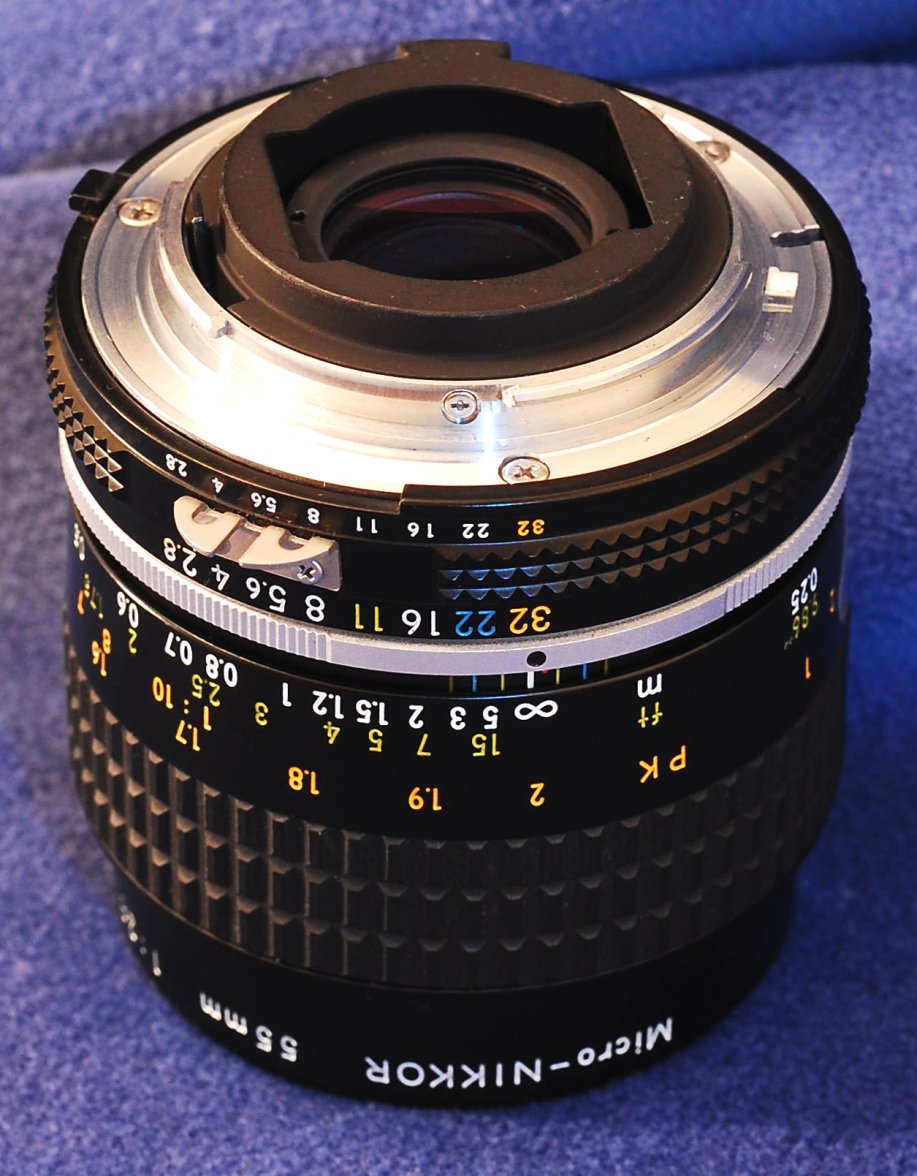gmmy775
·On the topic of vintage camera gear. Whenever I am able, I prefer the use of manual focusing over auto focus, and this has carried over into my adoption of mirrorless photography. I was thinking, if I could only carry one lens in my kit, what would it be. The answer was fairly easy, the 55mm f2.8ai-s Micro Nikkor, introduced in 1979. It will attach to just about anything with an F-mount, film or digital, and can be adapted to any mirrorless camera I am aware of with an inexpensive adapter. Why not a zoom? Well, being somewhat old school, I consider my feet the best zoom. But the better reason is that very few lenses ever made will do what the 55/2.8 will do…capture without spherical distortion through the entire focus range. Most lenses have a single focusing helicoid. This Micro-Nikkor has a helicoid in the front housing optical elements, and a second in the rear that contains the remaining floating optical elements. These helicoids move away from each other, and towards each other simultaneously as the focus is racked out or in. In typical lenses the front optical elements move away or toward the rear elements, which remain static. Regardless of the focal distance, there is neither “barrel” or “pincushion” distortion. Additional features such as Close Range Correction, and Nikon Integrated Coatings are helpful, but the magic of this macro lens is the Dual Helical Focus. Not to mention that this lens is considered one of the sharpest ever by Nikon, up there with the 105mm f2.5ai-s Nikkor. This lens is used not only in general and macro photography, but is considered a “reference” lens and employed in numerous scientific and reproduction categories like printed circuits, print copy, and art work.
None of this is news to old-timey film shooters, but there is probably a younger photographer or two that will find this information useful. For those landscape photographers, particularly if involved in HDR, this lens has a smallest aperture of f32. It certainly deserves a nod in any discussion of vintage camera gear. What might come as a surprise in this age of sophisticated auto focus with multi-axis motion stabilization is that Nikon will still make this lens for you, identical to the original, on special order.
The fifties through the eighties was an exceptional time of development for all metal and glass 35mm film lenses. During this period optical engineer Ellis Betensky was collaborating with Perkin-Elmer and NASA to refine optical designs through the use of their computers. The Vivitar Series One line of lenses was a partial result of this joint research, and in many ways elevated all of the consumer photography industry. This was an era before the routine use of plastics in both cameras and lenses, even in internal optical elements. Give vintage glass a try on your digital cameras, you might like it.
None of this is news to old-timey film shooters, but there is probably a younger photographer or two that will find this information useful. For those landscape photographers, particularly if involved in HDR, this lens has a smallest aperture of f32. It certainly deserves a nod in any discussion of vintage camera gear. What might come as a surprise in this age of sophisticated auto focus with multi-axis motion stabilization is that Nikon will still make this lens for you, identical to the original, on special order.
The fifties through the eighties was an exceptional time of development for all metal and glass 35mm film lenses. During this period optical engineer Ellis Betensky was collaborating with Perkin-Elmer and NASA to refine optical designs through the use of their computers. The Vivitar Series One line of lenses was a partial result of this joint research, and in many ways elevated all of the consumer photography industry. This was an era before the routine use of plastics in both cameras and lenses, even in internal optical elements. Give vintage glass a try on your digital cameras, you might like it.








